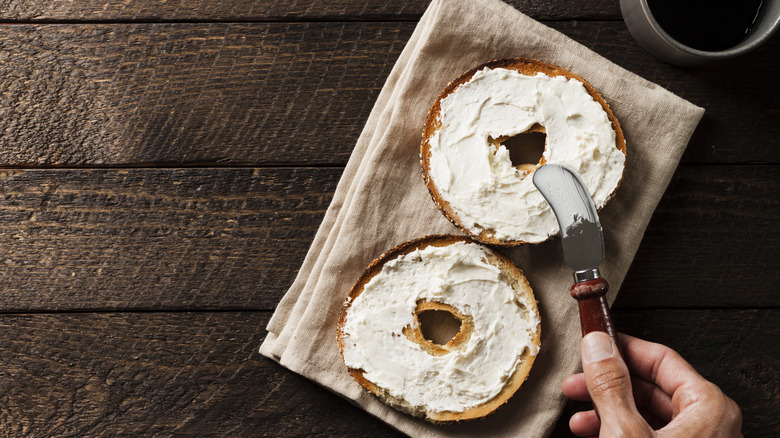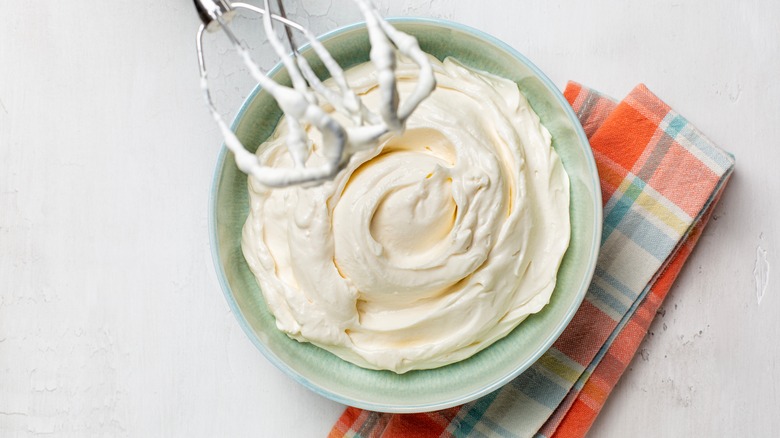Why You Want To Add A Dash Of Club Soda To Your Cream Cheese
This might sound weird — but hear it out. Whether it's leftover cream cheese you want to experiment with, or a cream cheese softening hack you're looking for, club soda can help. You may have heard that using club soda in pizza crust is a well-known trick to make the dough light and fluffy, and adding a splash to your cream cheese has a similar effect! Authentic bagel shops swear by this method to keep cream cheese light, airy, and easy to spread.
The carbonation in club soda actually breaks up the dense structure of cream cheese, preventing it from becoming too thick or clumpy. Just like how club soda is used in pizza crust to create air bubbles, it does the same in cream cheese, making it creamy without altering its taste. If you've ever struggled with dense, hard-to-spread cream cheese, this is the secret weapon you didn't know you needed!
How to incorporate club soda into cream cheese
Incorporating club soda into cream cheese is surprisingly simple. Start by letting the cream cheese soften to room temperature, then whip it using a whisk, hand mixer or stand mixer. As it begins to fluff up, add up to 4 tablespoons of club soda for every 8 ounces of cream cheese. Start with 1 tablespoon and work your way up. Don't go overboard — too much liquid will make it soupy. Add the club soda in gradually, one splash at a time, as you whip to make sure you get the perfect texture.
It's important to use the right kind of carbonated beverage here. Though they're often confused for one another, club soda, seltzer, and tonic water are very different. Club soda contains added minerals like sodium bicarbonate or potassium sulfate to enhance its taste. Seltzer is simply carbonated water without added minerals, while tonic water includes quinine and often sugar, which could alter the flavor of your cream cheese. Stick to club soda or seltzer in your cream cheese for the best results.
Temperature also plays a role in this hack. Ideally, the cream cheese should be at room temperature to allow for optimal whipping. If it's too cold, it may not integrate well with the club soda, affecting the final texture. The club soda should be fresh, not warm or flat, for the best whipping effect.

